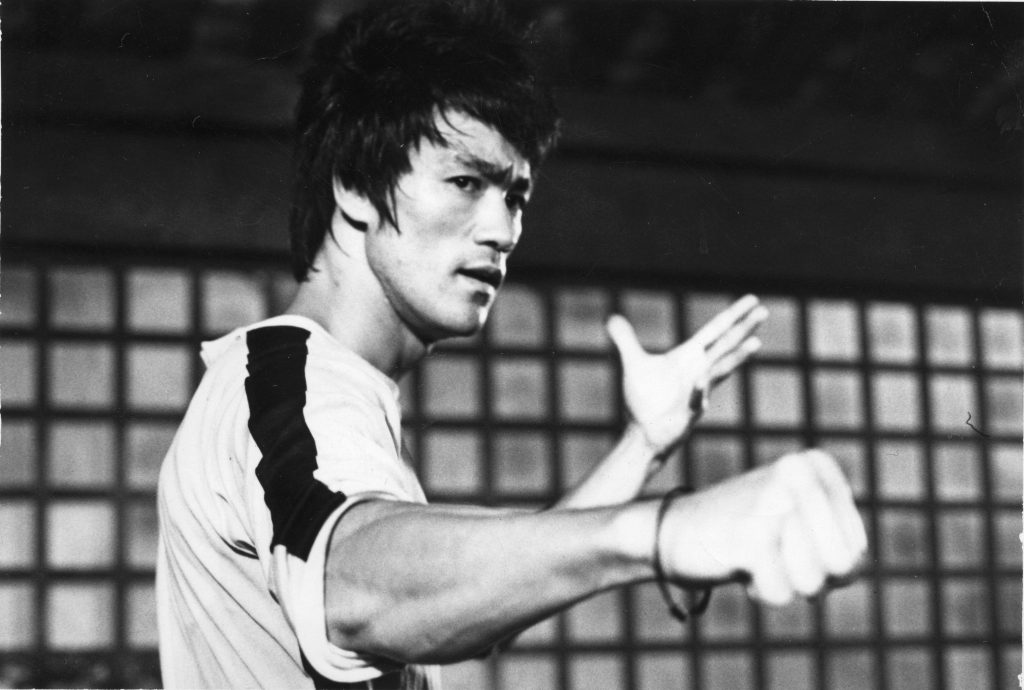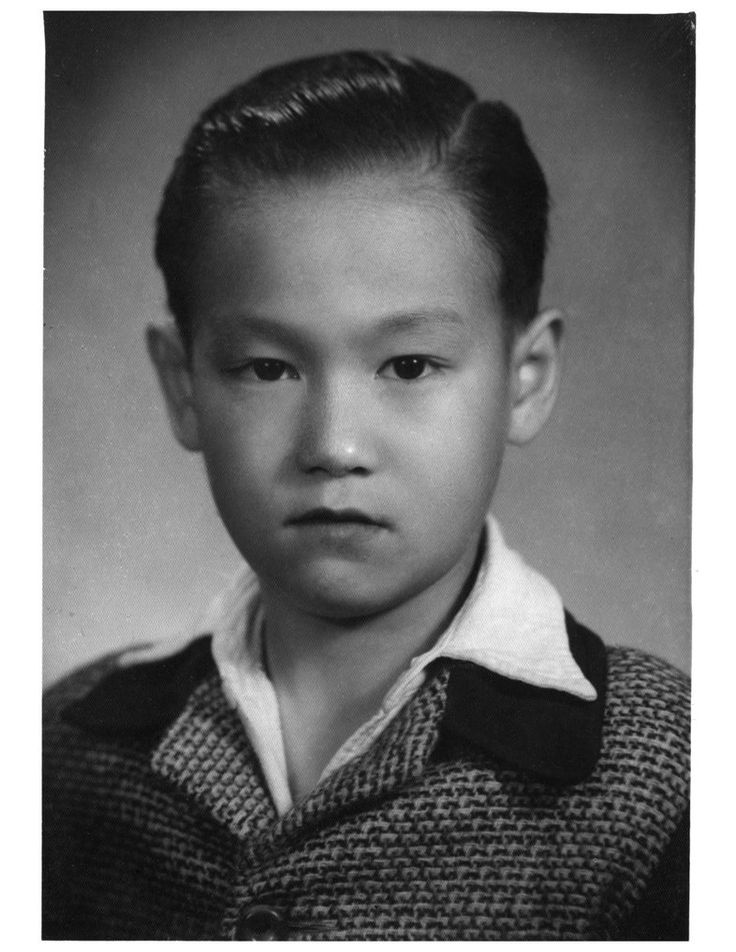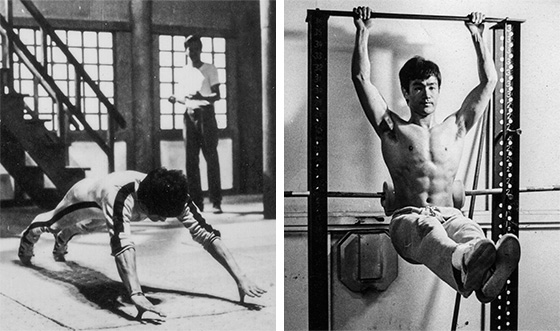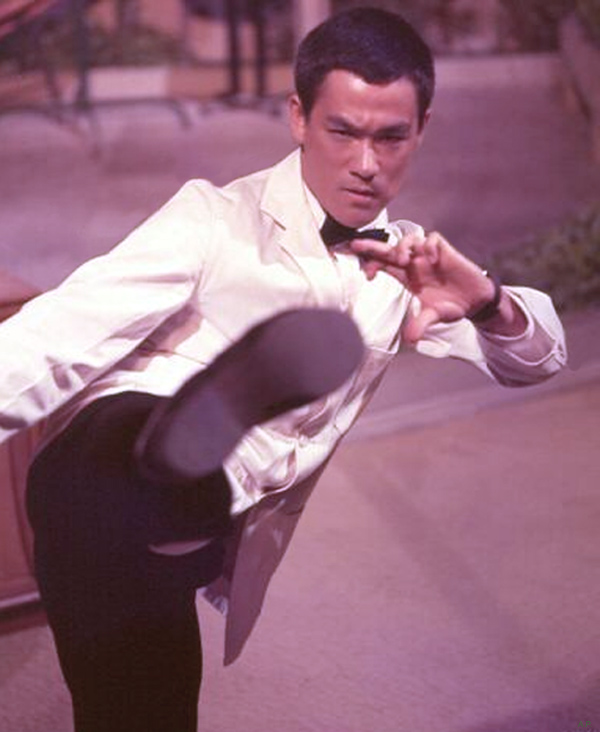“I fear not the man who has practiced 10,000 kicks once, but I fear the man who had practiced one kick 10,000 times.” – Bruce Lee

PHOTO: bruceleeactionmuseum.org
He was one of the most iconic figures of the 20th century, famous as a successful film director, actor, and martial arts badass. Yep, we’re talking about Bruce Lee.
Last time on History’s Badasses, we took an in-depth look at the life of Teddy Roosevelt. As a child, he conquered his own asthma, as a young man, he served as a naval officer, formed his own special unit of “rough riders” and fought in the Spanish-American War. As an adult, he served two terms as President of the United States, and even attempted to run for a third when he didn’t approve of his successor.
This time, we’re covering the incredible life of martial-arts expert Bruce Lee. We all know him from his films, Fists of Fury, The Green Hornet, The Chinese Connection, Return of the Dragon, and the posthumously released Enter the Dragon, but there’s a lot that you probably don’t know about this famous badass.
Early Life

PHOTO: pinterest
Bruce Lee was born on November 27, 1940, in San Francisco, California, in both the hour and the year of the Dragon. His parents were originally from Hong Kong, and eventually had four children including Bruce Lee.
He was originally named Lee Jun Fan, but a nurse named him “Bruce” at the birthing hospital. Growing up, his family never used the name.
We generally know Bruce Lee for his adult roles in martial arts based movies, but, in fact, he had his first television role at the age of just 3 months, in the film Golden Gate Girl, as a stand-in for an American baby.
When he was around two or three, Bruce Lee and his family moved back to a Japanese-occupied Hong Kong. Over the course of his childhood, from the age of six onward, Bruce appeared in over 20 films. He became known for his poetry, and even studied dance, winning Hong Kong’s national cha-cha competition.
When Bruce Lee hit his teens and began going to a diverse public school in Hong Kong, British students began to bully him for his Chinese heritage. At a young age, Bruce Lee joined a street gang to get away from them, and in 1953, when he was thirteen, he began to study Kung Fu under Master Yip Man.
Eventually, eighteen-year-old Bruce Lee moved to stay with some family friends just outside Seattle, Washington. He finished up school in Edison, Washington, working as a waiter at a restaurant, and would spend the next few years of his life in the United States.
A Man of Many Professions
After finishing high school in Washington, Lee went on to study philosophy at University of Washington. While studying at college, he taught the Wing Chun martial arts style to other students. Eventually, Bruce dropped out of college and opened up his own martial arts school in Seattle.

PHOTO: borntoworkout.com
It was here that he would meet Linda Emery, who he would marry at the age of 24 in 1964. He and his wife moved to California and Lee opened two more schools, teaching Jeet Kune Do, or “The Way of the Intercepting Fist”. He adored teaching, and his students were more like family than a class. He focused on developing a system of teaching that would focus on creating a versatile style that incorporated multiple techniques and fighting styles, including boxing and fencing.
He and his wife had two children: Brandon, born in 1965, and Shannon, born in 1969.

PHOTO: Martin Grams
Bruce Lee’s celebrity status began in 1966, when he starred in the popular television series, The Green Hornet, as the Hornet’s sidekick, Kato.
He suffered a major back injury due to pushing his body too hard, and took time to recover by writing his own book, Tao of Jeet Kune Do.
As his back recovered, Bruce starred in many major films, and even came up with the idea for a TV series about Buddhist monks called Kung Fu. He was supposed to get the starring role, but it was given to an American actor instead because the director and PR department didn’t believe American audiences would be able to connect with an Asian actor.
Fed up with the stereotypes crushing down on him and squeezing the life out of his acting career, Bruce Lee left the United States and moved back to Hong Kong in 1971 and signed a two-film contract there.
Breaking the Box Office

PHOTO: Channel Awesome
In 1971, his family joined him in Hong Kong just as Fists of Fury was released, starring Bruce Lee as a kickass martial artist chasing the men who had murdered his Kung Fu master. The film knocked through box office records in Hong Kong. It was the start to an incredible acting career.
In spite of poor reviews in the United States on both Fists of Fury, and his second film, The Chinese Connection, each new movie released broke the previous records set in Hong Kong. Just a year after moving to the country, Bruce Lee was a major film celebrity throughout Asia.
He founded his own film company, Concord Productions, and released the first self-directed film, Return of the Dragon. Bruce Lee was just one film away from something enormous.
Mysterious Death and Legacy
Just few months before his second self-directed film, Enter the Dragon, was to premiere, Bruce Lee collapsed during an interview at Golden Harvest in Hong Kong. He was wracked with seizures and headaches. Friends and family rushed him to Hong Kong Baptist Hospital, and it was there that the doctors diagnosed him with cerebral edema – an excess acclimation of fluid around the brain. The doctors were able to reduce the swelling and then they sent him home.
On July 20, 1973, a few months later, Bruce Lee complained of a headache, and he was given a painkiller by a Taiwanese actress who he was staying with (they were discussing making a film together), and then Lee went to lie down for a nap.
His producer and friend, Raymond Chow, tried to wake him up later, but was unable. They sent for a doctor, who spent ten minutes trying to revive him and eventually had to call for an ambulance.
By the time the ambulance reached the hospital, the 32-year-old Bruce Lee was dead. His cerebral edema had returned, exacerbated by an allergic reaction to the painkiller he had taken for his headache. His brain had swelled by 13%.
Some people claimed he’d been murdered. Others had thought he’d been cursed. Neither theory has held very much water. The autopsy confirmed that his death had been caused by a strange reaction to the painkiller he had taken.
Enter the Dragon was released posthumously, and did so well in both Asia and the United States that Bruce Lee was elevated to a godlike film icon status. The film grossed over $200 million.

PHOTO: The AV Club
Due to his hard work and refusal to be daunted by the racism prevalent in the film industry in the 20th century, Bruce Lee paved the way for more Asian Americans to receive roles in Hollywood film, and even created a brand new action hero archetype, a role that would be filled by similar actors like Chuck Norris and Jackie Chan.
His legacy as a martial artist is still revered today. In 2011, his daughter, Shannon Lee, updated her father’s book, Tao of Jeet Kune Do.
He was a man of courage, who wouldn’t take no for an answer, who had a passion for martial arts, a passion for poetry, for writing, for philosophy, and film. He broke through the barriers of prejudice and racism, and continues to fascinate and inspire hundreds of people today.
“Be like water making its way through cracks. Do not be assertive, but adjust to the object, and you shall find a way around or through it. If nothing within you stays rigid, outward things will disclose themselves.
Empty your mind, be formless. Shapeless, like water. If you put water into a cup, it becomes the cup. You put water into a bottle and it becomes the bottle. You put it in a teapot, it becomes the teapot. Now, water can flow or it can crash. Be water, my friend.”
— Bruce Lee

